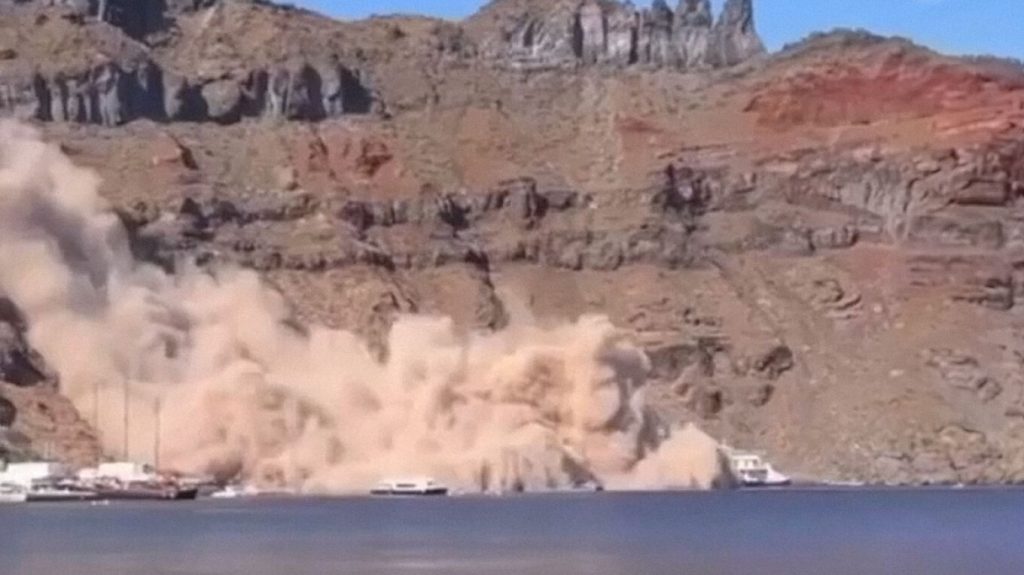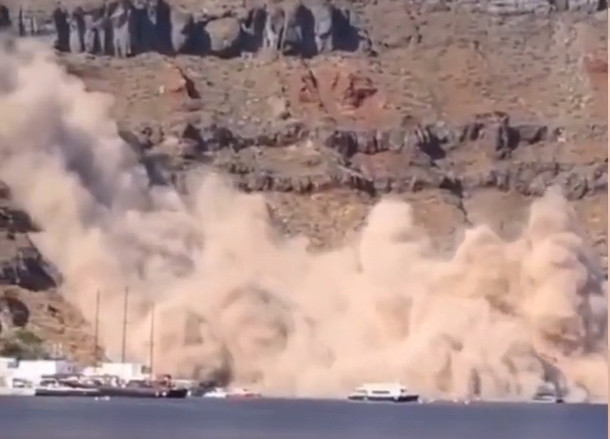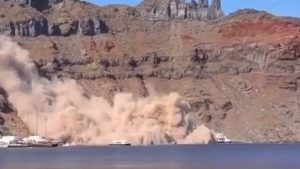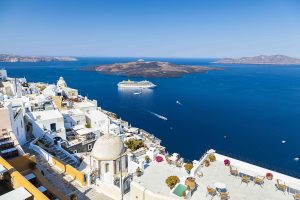Experts have voiced their concern regarding Saturday’s landslide on the small islet of Therasia (Thirasía), which is part of the renowned volcanic Santorini caldera archipelago in the southern Aegean. They emphasize that there are other areas within the Santorini caldera that are susceptible to landslides, warranting protective measures.
The landslide ended up in the sea near Therasia’s small harbor of Korfos, a part of the iconic cauldron-like Caldera. Fortunately, there were no injuries or damages reported to stores in the vicinity following the incident.
Nevertheless, the geological composition of the area, comprising rock formations that constitute much of Therasia and significant portions of the Santorini caldera, adds to experts’ worries.
Prof. Paraskevi Nomikou, who lectures and researches geological oceanography and physical geography, spoke to MEGA TV on Tuesday, noting that “for us, landslides are a common phenomenon in such a caldera, that is, in a volcano that has successive layers of lava and pyroclastic materials, which can be easily eroded, thus they can slide.”
Prof. Nomikou further emphasized the concern about other parts of the caldera prone to landslides, stating, “That’s why experts are collaborating with the municipality of Thira (Santorini) and have identified areas in need of protection. Let’s not forget it’s an active volcano, so it can cause earthquakes.”
For decades, Santorini, which could well be the best-known sight in Greece after the Acropolis in Athens, has been associated with the legendary Atlantis, which started life as a fictional allegory in a work by the Athenian philosopher Plato.






